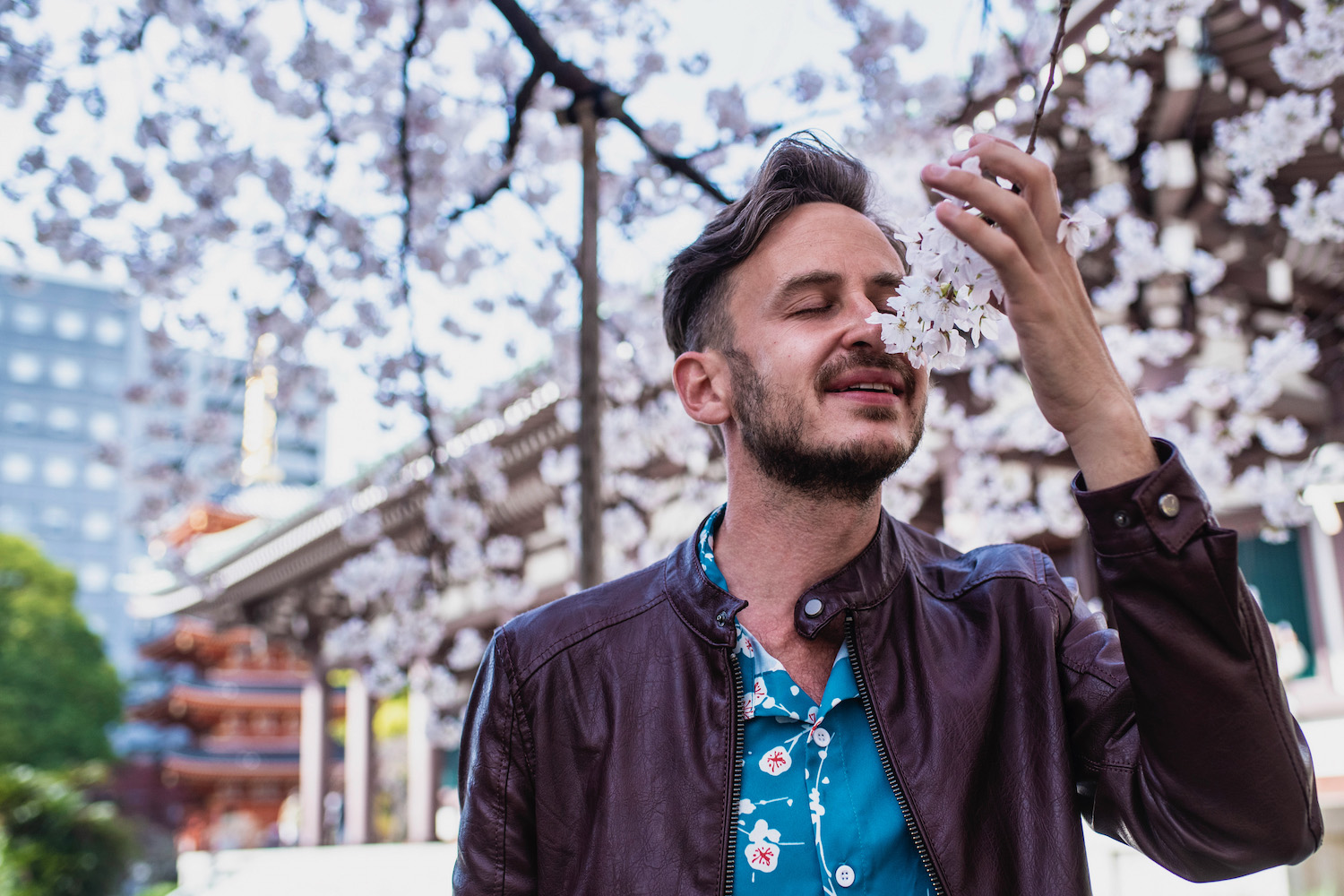I was having flashbacks on the train to Kumamoto—and not just because it was one of the last places I visited in Japan before Covid-19 locked me out for a year.
Kumamoto had also crowned my April 2017 Japan sojourn, the first I’d taken to that point with the express purpose of seeing cherry blossoms. Yet in spite having timed my trip as precisely as I could, I’d arrived nearly a week before full bloom: Memories of the barren sakura skeletons haunted me as my Shinkansen sped through Hakata station.
Passing through Shin-Tosu, however, it was difficult to ignore the voluptuousness of the billows outside the window, even taking into account how gloomy the sky was. It was difficult, disembarking in Kumamoto and walking toward to the castle, not to feel hopeful or even jubilant, in spite of the palpable (but not debilitating) wistfulness that whistled in on the wind.
If anything, I noted as I circled clockwise around the fortress (which, in spite of advertising a “Grand Unveiling,” is still very much destroyed from the 2016 earthquake), the trees are a bit past peak.
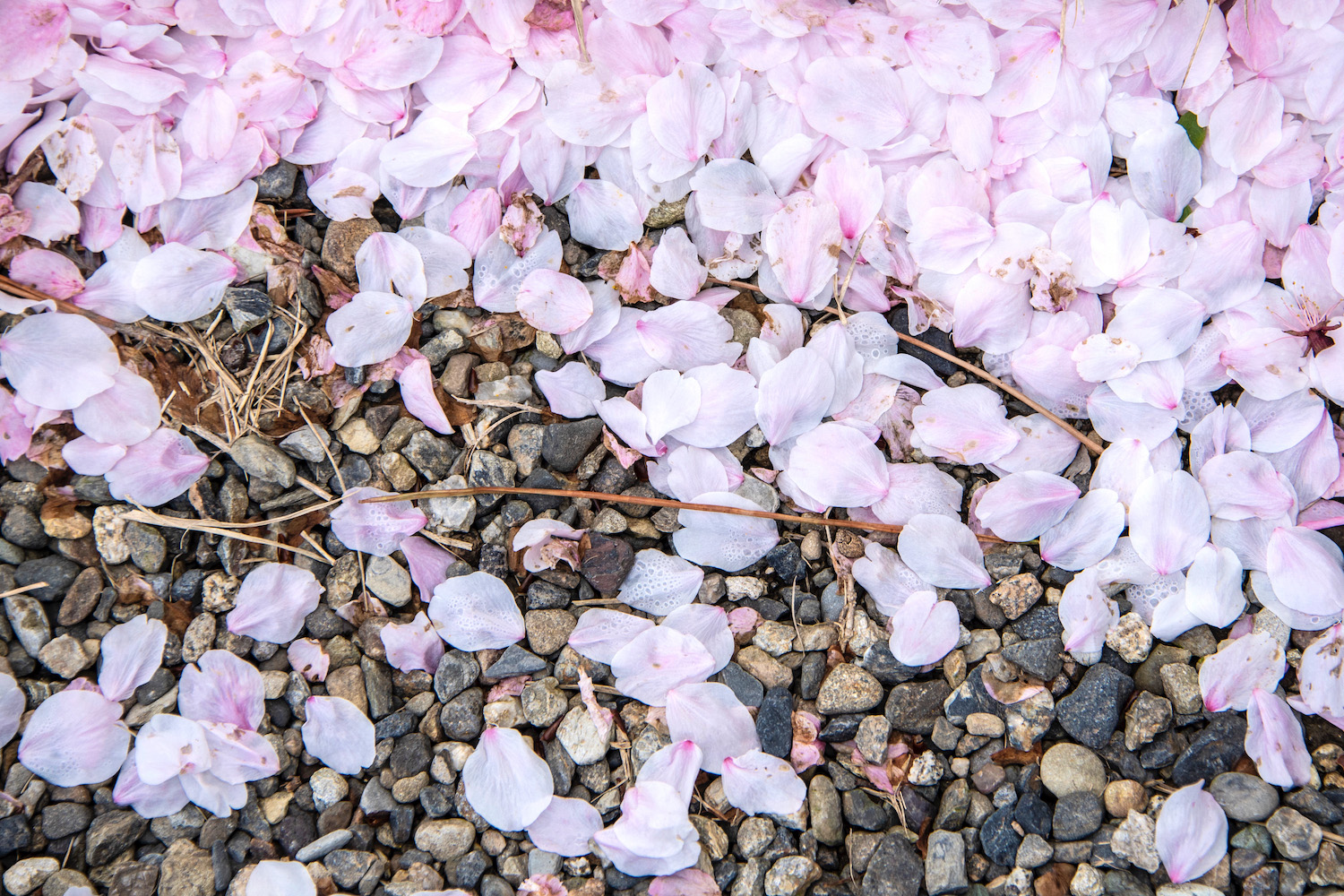
The fallen petals didn’t bother me, from a practical standpoint: I’d much rather be on this side of the bloom than the other. But the way the wind swirled them around the pavement did seem to mirror the simmering sadness I felt as night fell on the city, almost as if I’d choreographed them myself.
Monday began on a more upbeat note, literally: the 7-Eleven muzak that morning was my favorite Bangles song. As I tapped my digital Pasmo to pay for a cherry blossom daifuku and a sugar-free Redbull, it dawned on me that I hadn’t heard this former konbini staple since around the time of that first trip to Kumamoto.
The weather was also more hospitable to a good mood, even if the relatively few clouds in the sky did seem to be bunch up around the sun as it attempted to rise. A manic Monday indeed.
Several elderly Japanese people engaged me in conversation as I waited for bursts of the protracted golden hour to beam through perforations in the blanket the sky refused to shed as day broke. I held my own, even if I did occasionally stutter or speak in English.

Kumamoto, as you might remember if you read my posts back then as intently as I wrote them, was where it became clear to me that the romantic fantasy in which I was fully invested was never going to materialize into reality. Or at least it’s where that would’ve become clear, had I been in anything approaching a rational headspace.
Certainly, the events of the 16 months since then have elicited a sobriety in me I don’t think I’d experienced in any of the 34 years prior to then.
There are, of course, past lives to contend with, as you might also remember if you read my last Kumamoto post. Yet as I walked toward Suizenji sarden, along the same roads—the same canal—where those regressions occurred so long ago, something more tangible replaced the nostalgia for an existence I could only access beneath my consciousness.
Starting this year’s sakura season—if anything—on the tail end of full bloom, I’ve been trying to fashion a metaphor setting the gradual manifestation of mankai and its various contradictions (among them, as I saw in Suizenji, that fubuki petal blizzards can occur before any number of buds on a particular tree begin to blossom) as a parallel to the uneven, sometimes regressive path out of the pandemic.
(I obviously haven’t quite gotten there, given that I’ve decided to explain it to you instead.)
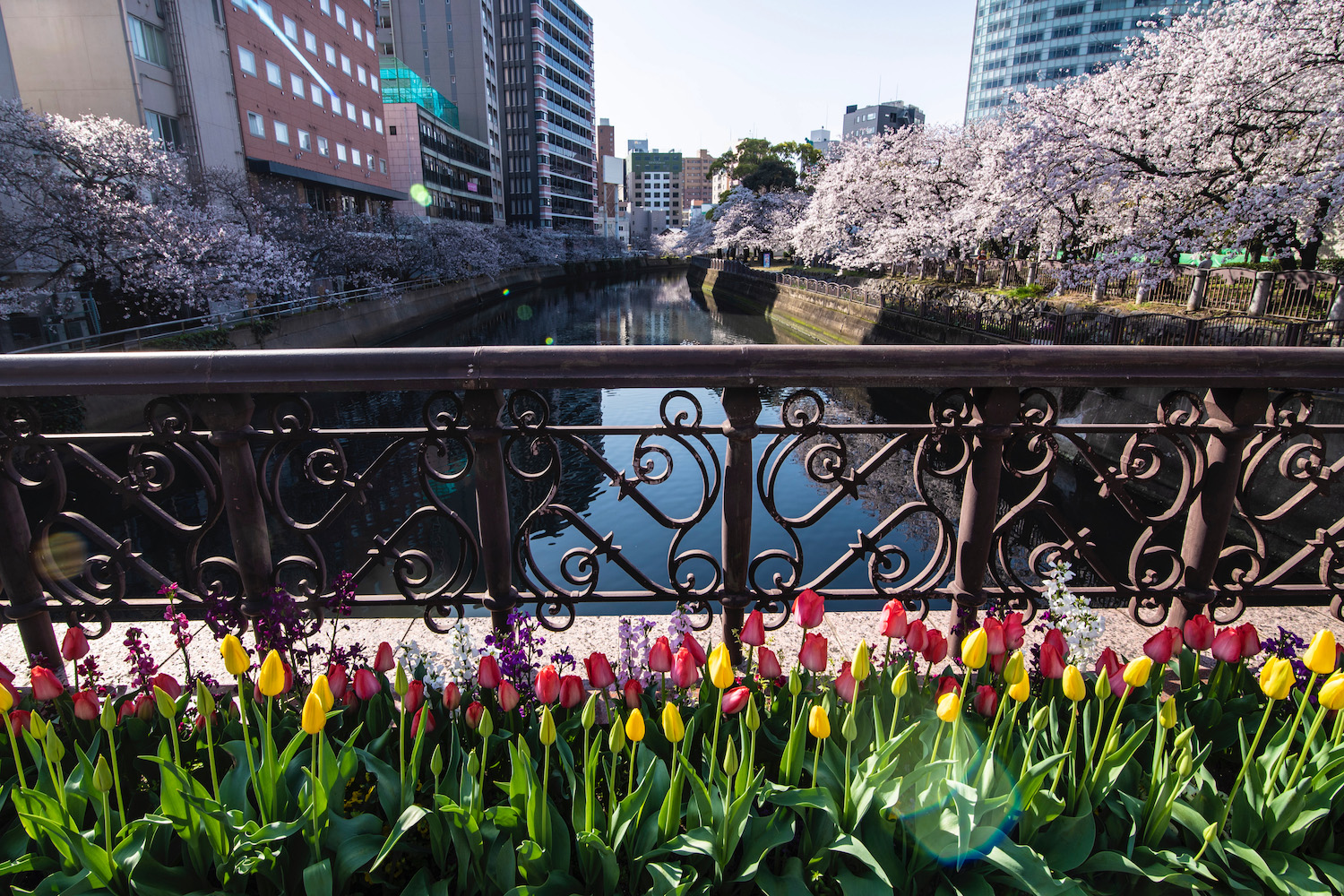
My time in Kumamoto ended like the sunset that night: Beautiful, but somewhere out of focus, almost out of
eyesight.
The scene in Fukuoka, meanwhile, was eerily similar to what I’d walked into on the morning of October 28, 2019. Which is to say not eerie at all: The only thing more delightful than the bright sunshine, unbroken by clouds, was the buxom, pink tree that awaited me in the courtyard of Tochoji temple.
(I almost didn’t notice the little sago in the corner, which had literally and figuratively framed my previous trip to Kyushu.)
The similarity, for its part, was by design. I’d followed in my own footsteps deliberately; nostalgia has become my drug of choice in middle age.
Yet as I moved on from Hakata’s Gion district, less famous than Kyoto’s but perhaps not with justification, it became clear that I was on a new path; I quickly gave up trying to conjure my past self, even if flashes of that October day flickered in on glints of sunlight.
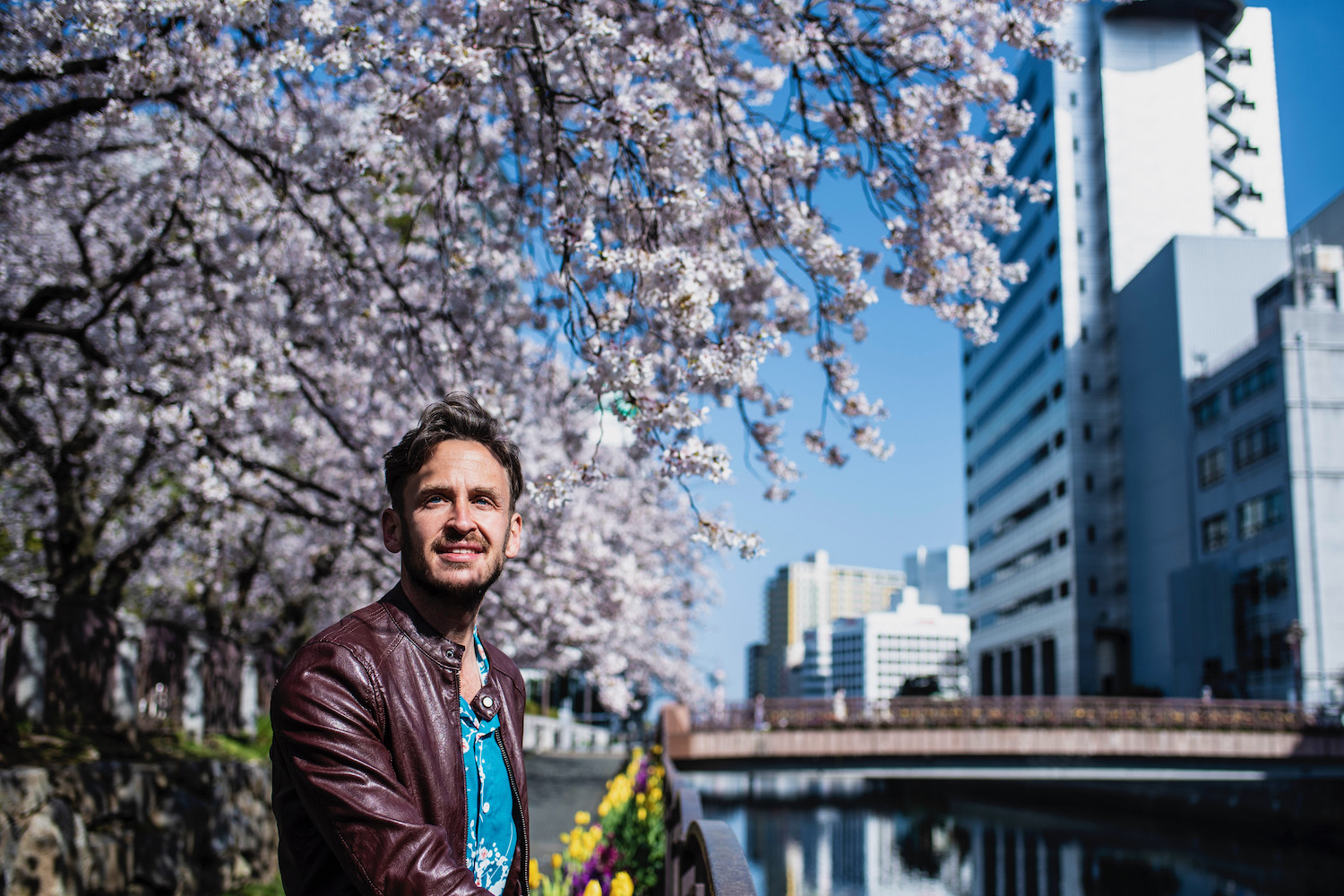
The last time I’d been at Tenjin Central Park, for example, little vegetation (or at least, minimal color) had flanked the Naka River. Today, the only thing more delightful than the billow of cherry blossoms shading the edge of the water’s iridescent surface was the ribbon of tulips running along it.
Occasionally, when I stepped into a particular shadow, I felt chilled to my bone, in spite of being close to breaking a sweat when moving quickly through the unobstructed light. Here, too, was a metaphor for the world’s current crisis, and our exit—which I feel deep inside my chilled bones is closer than most of us realize—from it.
I thought of surges in eastern and Central Europe, in Michigan, Brazil and India, like the freezing shadows I was stepping into, or even the turbid, wintry days that sometimes pop up in March or even April. The world is in the spring of the pandemic; brighter days, still, lie ahead. We cannot let the specter of frosts or hard freezes fool us into thinking the movement of the seasons has changed.
Certainly, I was having an optimistic day, moving on from the river to Maizuru Park and the Fukuoka Castle Ruins. Whereas I’d found this place dumpy and uninspiring during my October 2019 trip, and downright sad when I visited in March 2017 a week or more ahead of full bloom, today I seemed to arrive there at the same moment as the cherry blossom front itself: Suddenly, it all made sense.

The rest of the afternoon continued following my 2019-inspired itinerary, with mixed impacts on my emotions.
On one hand, certain details seemed as if they’d been put there by someone or something else, like I was a pawn in a game taking place far above or outside me. A young woman was giving away Monster energy drinks on precisely the same street corner south of Hakata Station where another young woman (or perhaps, the same one) had been doing the same thing 18 months before.
On the other hand, the selection of trees at Dazaifu temple was more sparse than I’d expected, even if my walk down the Mikasa River (where they were abundant) proved fruitful. I encountered a small group of elementary school girls on the bridge, whom to my shock attempted to engage me in English conversation.
I didn’t have much to say to them, as most 36-year olds don’t when they encounter 6-year olds. But I did wonder if the nightmare of life as a 30-something in 2021 would even figure into the calculus of people in their mid-30s in 2051, when I’ll be 66. I hoped it wouldn’t.
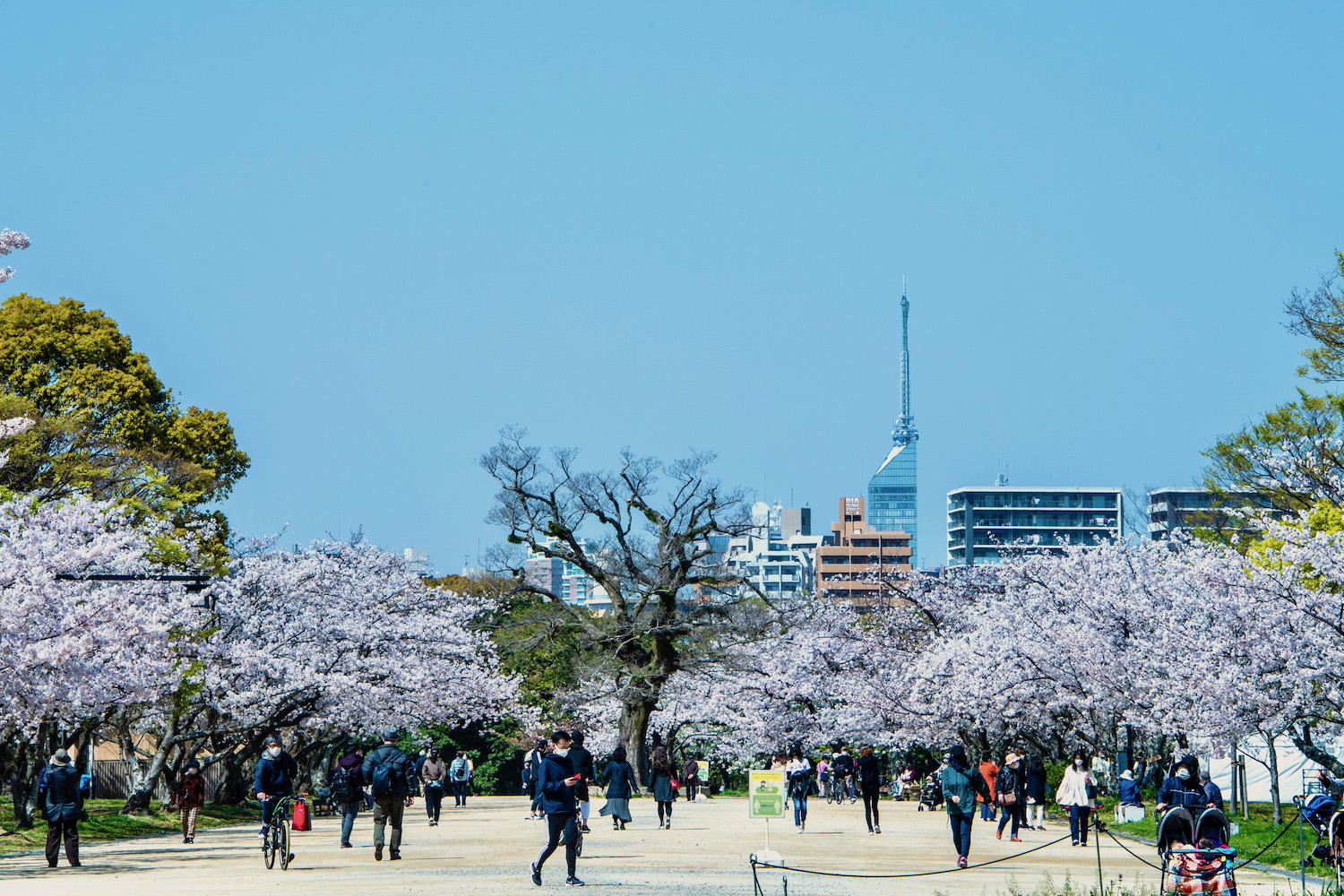
Atago Shrine, the best place to view the Fukuoka skyline, also leaves something to be desired from a cherry blossom perspective; I arrived about an hour before sunset and didn’t bother staying until night fell.
It was an anti-climactic conclusion to my second cherry blossom trip through Kyushu—my first successful one—even if I did remember that my most recent first day in Fukuoka had also been a Tuesday; for some reason (then at least, not so much now) this struck me as important.
I also remembered it was my third trip overall, though I’ll refrain from making any cliche comments about the charm this might portend.
Other FAQ About Kyushu Cherry Blossoms
Where are the cherry blossoms in Fukuoka?
Cherry blossoms can be found throughout Fukuoka, including near the ruins of Fukuoka Castle, along the Tenjingawa River in the heart of the business district and at several locations within the historic Gion district. Fukuoka is one of my favorite cherry blossom cities in Kyushu.
Where are the cherry blossoms in Nagasaki?
As is the case in Hiroshima, many of Nagasaki’s best cherry blossom spots are found near the place where the A-Bomb went off in the city. You can also find sakura in southern Nagasaki, near Oura Cathedral and the scenic, panoramic viewpoint of Glover Garden.
Where are the cherry blossoms in Kumamoto?
Kumamoto’s main cherry blossom area is Kumamoto Castle Park, which also happens to be the city’s most famous and impressive tourism area. However, you can also see cherry blossoms at Shikina-en Garden, and at several places around Mt. Aso, a volcanic caldera about an hour east of Kumamoto city in rural Kumamoto prefecture.



